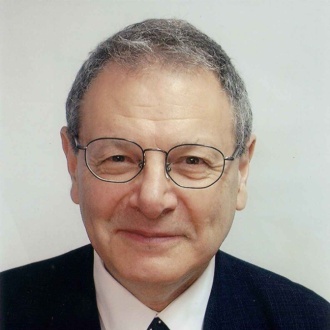Sukkot: Can We Top Yom Kippur
The Nature of Return
It happened once on the day after Yom Kippur that Rabbi Yosef Yitzchack Shneerson, the sixth Rebbe of Chabad asked his father, Rabbi Sholom Ber, “what now?” How do we top the pinnacle of holiness that we experienced on Yom Kippur? His father replied, “Now the work of repentance begins in earnest.”
This is a curious response because Yom Kippur is the day of repentance par excellence. If the work of repentance only begins after Yom Kippur, what is Yom Kippur all about?
Teshuva means to return and return is possible in two ways. One can be in an earthly state of mind and return to a heavenly state of mind or one can be in a heavenly state of mind and return to an earthly state of mind. Perhaps it is this latter form of return that begins after Yom Kippur.[1]
The Linking S’chach
Sukkot is a very different holiday from Yom Kippur. Yom Kippur is somber and reflective, Sukkot is celebratory and joyful. Yet, in many ways Sukkot flows from Yom Kippur. Jewish mystics taught that the foliage covering of the Sukkah, which reminds us of the cloud canopy that our ancestors enjoyed in their journey across the desert, has its spiritual underpinnings in the aromatic cloud of incense that enveloped the Holy of Holies when the High Priest entered on Yom Kippur.
The foliage is also linked with Rosh Hashanah. S’chach, the Hebrew term for the foliage, is spelled with the Hebrew letters Samach, Chaf and Chaf. Hebrew letters double as numerals, which allows us to attach a numerological value to all Hebrew words. The numerological value of the word Schach is one-hundred;  Samech is sixty and each of the two Chafs is twenty thus linking the Schach with the one-hundred Shofar blasts that we sound on Rosh Hashanah.[2]
Samech is sixty and each of the two Chafs is twenty thus linking the Schach with the one-hundred Shofar blasts that we sound on Rosh Hashanah.[2]
Notwithstanding the marked difference in the character of these festivals we have established a clear link between them. One flows from the other; the work that begins on Rosh Hashanah and concludes on Yom Kippur is channeled into the joy and celebration of Sukkot. How does this work?
The Holiday Curve
When the new year dawns we recognize a need to earn G-d’s goodwill for the coming year and we turn inwards in reflective contemplation. We acknowledge that our busy entanglements in everyday life detract us from our primary and overarching mission. We are charged with the sacred task of identifying the latent spark of holiness in every created being and fanning that spark into a blazing inferno, to demonstrate the innate G-dliness in every human and bathe our world in its inspiring glow.
To do that we must live in the world and interact with it, but the catch is that sometimes the world overwhelms us and distracts us from our mission. Rather than serve as G-d’s ambassadors to the world, we find ourselves influenced by its culture and value systems. We realize with a start that we have become rather secular in our values and self absorbed in our thinking. We have virtually neglected G-d for most of the past year.
At this point we resolve to do Teshuvah; return to the fold and to G-d’s embrace. We let go of our material absorptions and toil mightily to engage our soul. This pristine yearning is captured and trumpeted by the Shofar’s call, its soulful timbre stirring our souls to inspiring heights. We emerge from Rosh Hashanah resolved to live a more exalted and G-dly life style.
We pass the first ten days of the year absorbed in thoughts of repentance. We identify our shortcomings and learn to recognize our weaknesses and vulnerabilities. We regret our previous neglect and resolve to walk with G-d in the coming year. This effort reaches its zenith on Yom Kippur when we read of, pray for and relive the grand entry of the High Priest into the Holy of Holies.
This momentous occasion was a time of deep stillness and self abnegation. In the Holy of Hollies the high priest’s thoughts were focused entirely on G-d. So focused was the High Priest on his meditations that for the duration he forgot entirely about himself and his needs. When the sacred cloud of incense spread across the room the High Priest experienced a moment of such transcendence as to be fully and completely transfixed, absorbed, as it were, in the sanctity of the moment and the aura of G-d.[3]
This is the matrix of spiritual devotion. As Yom Kippur draws to a close and we chant the fateful words Shema Yisrael, the universal proclamation of Jewish faith, our journey is compete. We have successfully returned; we have fully arrived at the splendorous, glorious and majestic palace of the Divine. The Shofar on Rosh Hashana marked the soul’s point of embarkation on the journey of return, the cloud of incense marks the soul’s completion of this journey as it reaches its nadir of non existence.
What Now?
“What now,” was the former Rebbe’s loaded question? Where can we possibly go from here? Can we top Yom Kippur? “Now,” his father replied, “the work of Teshuva begins in earnest.” We have climbed the mountain and successfully reached the summit, but life isn’t lived on the summit. Life is lived on earth and it is time to return. We have to begin the return journey, which was the entire purpose of our upward journey. We were in the lowlands before the journey began, but back then we were mired in the morass of the swamps and wetlands. This time we return strengthened by the exquisite beauty and majestic grandeur of our spiritual experience. We come back fortified with soulful vigor able to succeed in our work as G-d’s ambassadors to the world.
So we embark on Sukkah building as soon as night falls after Yom Kippur. The Sukkah anchors us on earth and in material life, but in the rarified atmosphere of a Mitzvah. We build a Sukkah and cover it in Schach, reminiscent of the Shofar and the incense, the highest points of yesterday’s transcendence. Only this time we channel the intense energy into the material celebrations of the festival.
We eat, drink, sleep and perform all of life’s tasks in the Sukkah.[4]The Sukkah is not a place that separates us from the world; it is a platform that allows us to reenter the world through a portal of holiness and Mitzvah. This portal lasts for seven days and by the time the festival draws to a close we are fully prepared to take the final step of leaving the Sukkah’s sacred environment and entering everyday life with vigor and joy; the hallmarks
[1] I write perhaps because a footnote to this story suggests that after the self cleansing that takes place on Yom Kippur it is possible to repent even for the refined and subtle sins that are not identifiable before Yom Kippur.
[2] In particular the Samech represents the sixty Tekiah blasts, the first Chaf represents the twenty Shvarim blasts and the second Chaf represents the twenty Teruah blasts.
[3] In our own experience of this moment we fast and deprive ourselves of many forms of material pleasure. The object of this self denial is to liberate our soul by giving it time for its spiritual pursuits. This is perhaps why the Torah (Numbers 16:29) links our physical afflictions with the soul, when it says,” You Shall afflict your souls.”
[4] That the Sukkah allows us to perform mundane tasks in an aura of sanctity indicates that the sanctity of the Sukkah surpasses even that of Yom Kippur. The rule in matters of the spirit is that what originates from on high reaches down low. The lower it reaches, the highest its origin. The Sukkah reaches down to the very mundane tasks of life such as eating and drinking and renders them Mitzvah actions. This indicates that the sanctity of the Mitzvah transcends even that of Yom Kippur, which prohibits material engagements. This is also why the Sukkah envelops us completely. No other Mitzvah envelops us so fully. We enter a Mikvah, but only for a short period. One is enwrapped in a Talit, but not completely enveloped. The Sukkah envelops us completely. This is because the Sukkah represents a hug from G-d. When you hu,g you link your hands behind the other’s back. This indicates that you love the other, not for their qualities, but for who they are. The Sukkah allows us to be holy not only during prayer and Torah study, but also while we engage our material pleasures and needs.

























